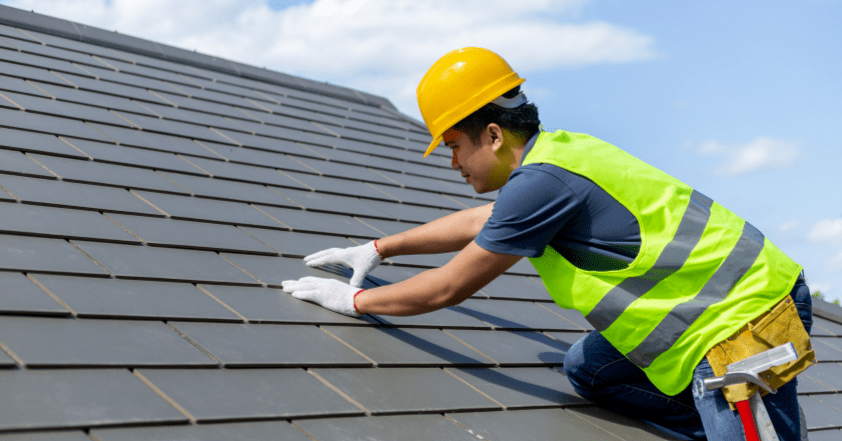Roofing contractors need to have a reasonable cost and material estimate so that they can generate profits and give a fair price for the services they offer. Before now, calculations of roof dimensions and rough estimations were made through physical measurements, ladders, paper, and computational tools. This was especially the case because estimates depended on human observations and could easily be distorted. Nevertheless, in the recent past advances in the technologies being used in roof estimating have evolved to higher technologies that will enhance accuracy.
Table of Contents
Challenges in the Development of Aerial Measurement Technology
Aerial measurement technology is one of the most significant technologies that have revolutionized the roofing estimation process. Companies that conduct roof measurements can now get accurate photorealistic representations of the roof structures using drone-mounted cameras or satellite images in some cases. This enabled them to make precise measurements of factors such as area, gradient, and number of parts which were either very challenging or could not be measured adequately with traditional techniques.
Some of the roofing software can accept these 3D models and calculate material and manpower needs with user input. They eliminate almost all of the takeoffs, quantities, and pricing lookups that Construction Estimators used to make manually. Consequently, estimators can develop very precise estimates in a considerably shorter time than traditional methods allow. This also eliminates the chances of human errors especially when it comes to entering the right numbers and solving mathematical problems.
Advanced Imaging Technology
However, other hunting techniques such as the use of LiDAR (Light Detection and Ranging) in image-aided roof measurement are also enhancing the estimation precision. LiDAR employs a laser rangefinder that shines pulses of laser light on the objects and surroundings to establish a measurable topographic representation. LiDAR recognizes features at least a few millimeters to look for features that could affect material amounts or accessibility challenges.
Some of the latest smartphone apps also contain a variety of imaging and visualization technologies. For instance, it is possible to imagine apps that enable contractors to capture a panoramic picture of a roof to produce a measured three-dimensional model right away. Then, with a simple click of a button, the app can compute a list of materials and the estimated cost of the project.
Linking with CRM & Inventory Management
Another significant progress is the integration of the link with other Construction Estimating Services business estimating software. Some software solutions are currently compatible with CRM systems to optimize the leads’ flow and link estimates to the client profile. This provides better organization and less ambiguity in retaining important data about the particular client. Estimating programs can also be synchronized with accounting, ERP as well as inventory management software. This enables data such as current material price and market data to update estimates in real time. It also minimizes the input of the same information and manual transmission of estimate details to other complementing systems. This automation relieves the human resource effort, but at the same time enhances estimate reliability.
These new estimating technologies are making tangible changes to the functioning of many roofing contractors’ businesses. For many, it has enabled them to prepare very accurate estimates in less time than usual. This in a way assists them in being able to secure more business with the decrease in probabilities of instances whereby there are cases of wastage of either material or labor resulting from wrong estimation.
Improved Reliability Of Estimates
The improved reliability of estimates has also boosted the bid-to-contract conversion ratios for some roofing contractors. They enable the contractors to offer their clients more transparency in their work as they make precise estimates of the project. This makes the clients more inclined to award the project to the construction company since they have a level of trust in them. Moreover, top-of-the-line estimating software tools come with comprehensive reports that include all the measurements and costs computed. These professional reports add a certain value to the contractor, which can woo customers over other competitors and is a key factor.
It also cuts down on the possibility of unanticipated expenses being incurred halfway through the project and results in reduced profits. Many professionals have found that using technology to estimate work increases the roofers’ project profitability by 5-10% due to the more accurate costs and the more effective process. This makes it possible for Construction Estimating Service firms to offer their products at cheaper prices to compete effectively.
Conclusion
Roofing Estimation Accuracy in roofing has advanced greatly in recent years due to technological advancements, which make the Roofing Estimation Accuracy far more accurate than by hand. GPS, 3D modeling, high-resolution imaging, connectivity with business systems, and the application of automated estimating tools have helped roofing contractors to be precise and have more control.
It directly affects contractors’ positions, project viability, and service delivery outturns in the market. Understandably, changing to new technology is an investment but for most roofing businesses, the advantage outweighs the initial cost in the long run. The advancement in technology does not stop here and therefore contractors should look out for other technologies that could enhance their operations. This is essential for every roofer as the accurate estimation of jobs makes the difference between success and failure in business today.
